Waterloo - 18 June 1815
Historical Background
Napoleon retained his strategic brilliance, placing his army squarely between the Prussian and Anglo-Allied armies on June 16th. His tactical genius was fading. He allowed an entire corps to countermarch aimlessly on the 16th, deny him the opportunity for a decisive victory either at Ligny or Quatre Bras. Instead, at the end of the day the beaten Prussians escaped at Ligny and Wellington still held the crossroads at Quatre Bras. On the 17th Napoleon turned his main strength towards the British, after detaching Grouchy with two corps to pursue the retreating Prussians and prevent them from uniting with Wellington. A massive storm drenched the area on the 17th as Napoleon advanced upon the Anglo-Allied army that was deploying for battle in front of Mount Saint Jean. The 18th dawned clear, but the rain-soaked ground still made maneuvering cavalry and artillery difficult, so Napoleon delayed the start of the battle, waiting for the ground to dry. Wellington fielded an Anglo-Allied army of 50,000 infantry, 11,000 cavalry and 150 guns. In front of his line, there were three strong positions; the château of Hougoumont, the hamlet of Papelotte and the farmhouse and orchards of La Haye Sainte. Many of his veteran regiments from Spain had been sent to Canada and the United States to fight the Americans. Napoleon’s army consisted of 48,000 infantry, 14,000 cavalry and 250 guns. Many of these troops were veterans of at least one campaign. It was about 11AM before Napoleon gave battle with artillery salvoes and ordered the initial assault against Hougoumont. The battle of Waterloo is well documented, and rather than skim through the account, it is recommended that players take advantage of the numerous sources available and enjoy reading about this epic struggle between two of the greatest commanders in history.
The stage is set. The battle lines are drawn and you are in command. Can you change history?
|
|
Set-Up Order
|
Battle Notes
British Army
• Commander: Wellington
• 6 Command Cards
*Use brown blocks for the Nassau, Brunswick, Hanover and Dutch units.
Also use the Portuguese National Unit Reference card for the Allied troops with one exception: line infantry units will retreat 2 hexes for each flag.
• Optional 6 Tactician Cards![]()
![]()
![]()
![]()
![]()
![]()
 |
 |
 |
 |
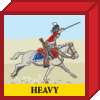 |
 |
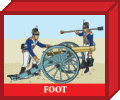 |
 |
 |
 |
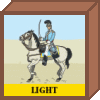 |
|
| 4 | 1 | 1 | 1 | 1 | 1 | 3 | 3 | 6 | 1 | 2 |
French Army
• Commander: Napoleon
• 6 Command Cards
• Optional 6 Tactician Cards
• Move First![]()
![]()
![]()
![]()
![]()
![]()
![]()
 |
 |
 |
 |
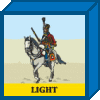 |
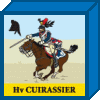 |
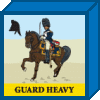 |
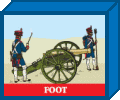 |
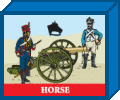 |
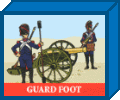 |
 |
| 8 | 1 | 1 | 1 | 2 | 1 | 1 | 2 | 1 | 1 | 3 |
Victory
8 Banners
Special Rules
The three building hexes are Victory Banner objective hexes for the French player. If a French unit occupies an objective hex at the start of the French player’s turn, the French player gains a Victory Banner. As long as the unit remains on the objective hex it will count as a French Victory Banner. If it moves off or is eliminated, it no longer counts
(Temporary Victory Banner Turn Start)
Impetuous British Cavalry. Any victorious British cavalry unit must advance into the vacated hex after regular or bonus combat. Victorious British cavalry must also advance the extra one hex after regular combat if one or more vacant hexes are available (Allied player’s choice of hex).
A Walled Farm terrain tile hex effect has been updated to allow a unit on a Walled Farm hex to ignore one flag. It is suggested that players replace Hougomont and La Haye Sainte town tiles with Walled Farm tiles and use the updated effect.

